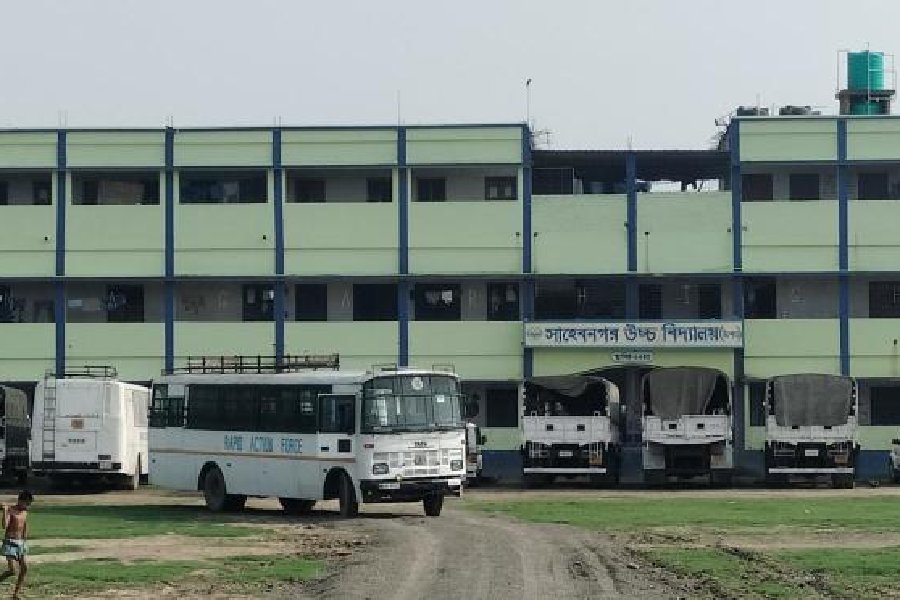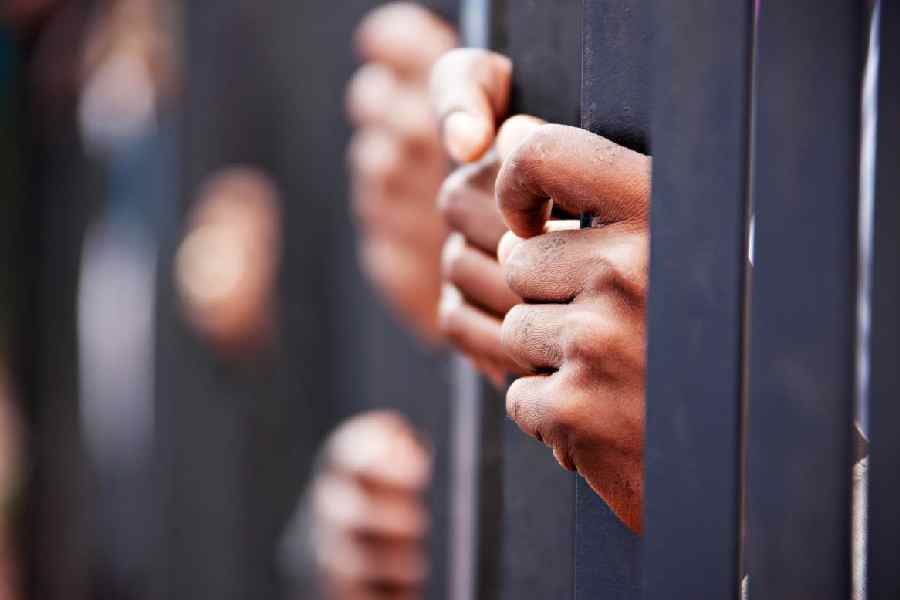 |
| Ganesh Pyne at CIMA Gallery, where his exhibition on the Mahabharata opens on Friday. (Amit Datta) |
“About suffering they were never wrong/ The Old Masters,” the poet, W.H. Auden, had famously written, “how well they understood/ Its human position.” The seventh solo show of Ganesh Pyne, opening at CIMA Gallery on Friday, brings to mind the sublime truth of these lines.
Based on the Mahabharata, this collection of 44 works — in tempera, charcoal, crayon and pastels — is the fruit of two years of slow and difficult labour. “Although I have painted characters from the Mahabharata before, this is my first sustained exploration of the epic,” says the modern master of the Bengal School.
In this body of work, the artist has trained his dark eye more specifically on the marginal characters: Dushala, Amba, Ekalavya, Yujuthshu. Even though a majority of the paintings illustrate key moments from the epic, textual fidelity is not his primary concern. “I was more interested in capturing the essentially tragic spirit of the story,” Pyne explains. Skulls, bones, corpses, faces contorted in pain or lament, eyes stricken with fear or lusty with vengeance: the entire work sweeps over you like a prolonged sigh of despair. These images are bound to have an inevitable resonance in these volatile times.
“If you look up the death of Ghatothkatch in the original text, you will find a very different scenario from what I have painted,” Pyne elaborates, referring to a haunting work in charcoal, crayon and pastel, in which the ogre-son of Bhimsen breathes his last on his father’s lap. In the same way, purists may object to the figure of Kali — cosmic destroyer of kala (time) — dancing rapturously in the killing fields of Kurukshetra.
No less surprising is the gleaming face of Jagannath looming over Draupadi as she is disrobed.
“I failed to find a plausible description of Dharma in the text,” Pyne admits, “So I painted him in the likeness of Lord Jagannath of Puri.” Admirers of Pyne are probably going to be more riveted by the glittering eyes of the god than worry about the authenticity of his vision. “What I really found challenging,” says Pyne, “was the restless pace of the narrative — how to capture this perpetual motion in still images.”
As someone who has worked as an animator, Pyne feels an instinctive pull towards motion pictures. He mentions Peter Brook’s Mahabharata and Nathabati Ananthabat as formative influences for him. He even speaks wistfully of Satyajit Ray’s unfinished project of making a film based on the agnatabash episode in the Mahabharata.
But Pyne’s sequence, unfolding like visual poetic drama, has its own darkly psychological and symbolic allure. Krishna, for instance, appears as the charioteer etched out in silhouette. “He is a shadow impossible to capture,” Pyne feels. The hands of Shakuni, the wily trickster, cheating at the game of dice, are painted in white.
There is also a new luminosity in the texture of this body of work that sets it apart from vintage Pyne. While preserving the purity of his signature style, the artist has, as it were, illuminated his canvas with a new light. The decision, according to this great chronicler of darkness, was more or less conscious. Into this glowing void, dark truths have been distilled with a characteristically unsentimental touch.
In Pyne’s vision of the last things, the end comes not with a bang but with a whimper.










